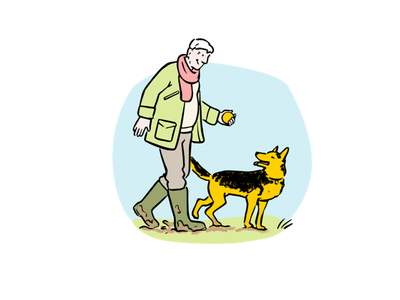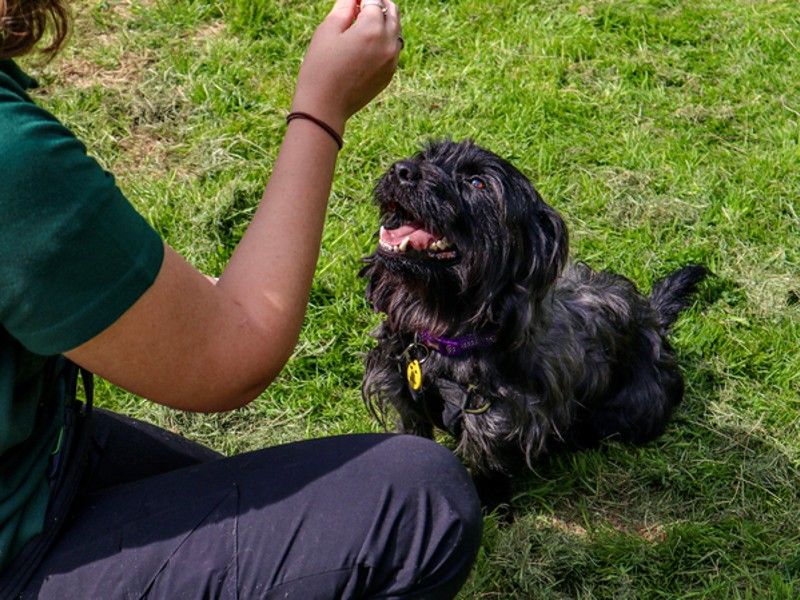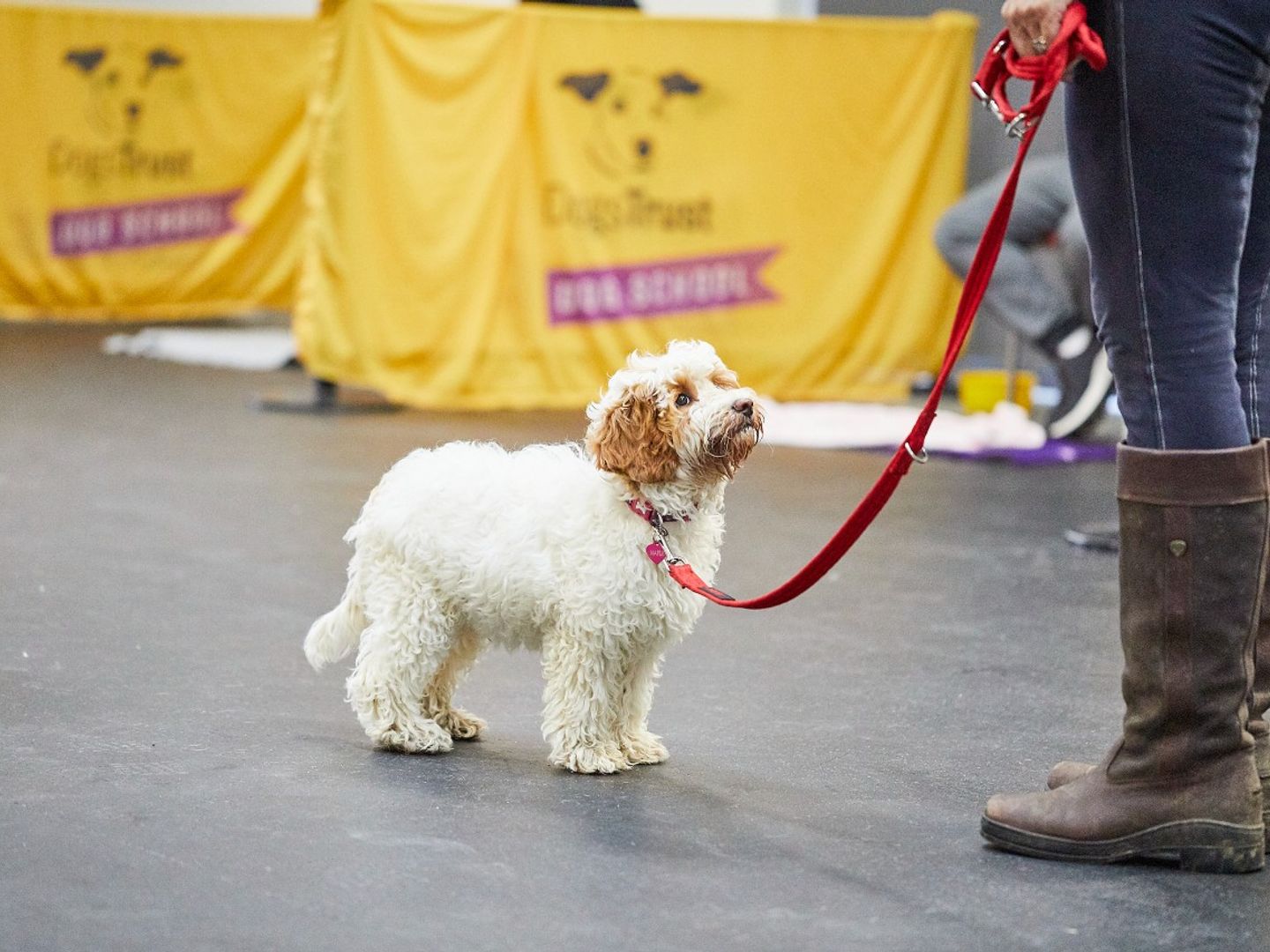
Make your Dog Proud!
Put yourself to the test! Take our quiz & see if you can spot the myths!
Debunk common dog training myths!

Dog training is full of myths that can mislead even the most well-meaning dog owners. But along with these myths are essential truths that can help you and your dog succeed. Let’s break down common dog training myths and balance them with some key truths to guide you on your journey.

Put yourself to the test! Take our quiz & see if you can spot the myths!
You can’t teach an old dog new tricks!
Myth! Dogs are innately good learners. They are naturally inquisitive and are eager to grasp new experiences. In fact, if a dog is awake, they are learning. They constantly observe their environment and respond to what they hear, see, and smell.
Truth: Older dogs often focus better than puppies. With patience, they can master new skills and even unlearn bad habits.
If I train my dog using treats, they will only listen to me when I have treats.
Myth! Often, treats are swapped for praise or toys and might be phased out once the dog master's the skill. The main point of giving a treat is to create a positive link with learning, making the dog enjoy working with people, expect good things, and repeat rewarded behaviours.
Truth: Rewards, whether treats, toys, or affection, are about creating a joyful connection to learning. Dogs love working for a reward, and over time, the reward can be anything your dog values.
My dog listens to me at home, so I don’t need training.
Myth! When out and about it's important that our dogs will still respond to us. There are lots of distractions outdoors. So, when training make sure to train at home and in different environments.
Truth: Real-life training is key. Practice commands during walks, visits to the park, and other new environments to ensure your dog is reliable in any situation.
Small dogs don’t need training.
Myth! Small dogs need training just like larger dogs. Training helps them learn good manners, follow commands, and behave well in various situations. Unwanted behaviour may be less obvious in smaller breeds. You will notice a Labrador jumping up on you before you notice a Yorkshire Terrier. Training is essential for all dogs, regardless of their size.
Truth: Training gives all dogs confidence and manners, creating a safer and more enjoyable experience for everyone.
You can’t train a puppy until they are 6 months old.
Myth! Training a puppy can start as early as 8 weeks old. At this age, puppies have begun to explore their environment. Once you bring your dog home, allow them time to settle into their new home before beginning training. Keep training slow and steady
Truth: Early training teaches puppies structure and confidence, setting them up for a lifetime of good behaviour. Focus on basics like toilet training and socialisation.

Rubbing dog’s nose in their accidents will house train them.
Myth! Doing this will only damage your relationship and it's not a nice thing to do to your friend who is learning how to do something new. If you need help try our toilet training advice or our Online Puppy Management Course!
Truth: Positive reinforcement, a consistent schedule, and close supervision are the keys to house training success.
My dog doesn't like treats so I can't train them.
Myth! Not all dogs are food motivated but that doesn't mean they can't learn. For some dogs they might prefer toys, verbal praise or rubs as forms of positive reinforcement.
Truth: Some dogs prefer toys, verbal praise, or affection over treats. Find what motivates your dog and use it to reinforce good behaviour.
Crate training is cruel.
Myth! Crates are not prisons, they’re safe spaces.
Truth: A crate, when introduced correctly, becomes a comfortable retreat for your dog. Use positive reinforcement to make the crate a happy, calming place.
You know your dog did something wrong if they look “guilty.”
Myth! Actually, what looks like "guilt" in dogs is often misunderstood. Dogs aren't likely experiencing guilt the way humans do. Instead, their "guilty look" — lowered head, avoiding eye contact, tail between legs — is typically a response to your tone, body language, or past experiences of getting in trouble.
Truth: Dogs respond to our cues. They don’t feel guilt but may show submissive behaviours if they sense you’re upset.
‘My dog is the best doggo’
True! Your dog is the best doggo!
Dominance Myths
All Myths! Pack theory is old and has been debunked. It came from early studies on wolf behaviour, suggesting dogs live in packs with a clear "alpha" leader. This led to dominance-based training, where people tried to be the "alpha" to control their dogs. These methods can make dogs scared and aggressive.
Modern dog training focuses on positive reinforcement and understanding canine behaviour through science. Rewarding good behaviour not only produces better results but also strengthens the bond between dogs and their owners. It fosters trust, respect, and a happier relationship for both.
Consistency Is Key: Dogs learn through repetition. Consistent verbal cues and expectations help them understand what’s expected.
Patience Pays Off: Every dog learns at their own pace. Stay calm and persistent.
Socialisation & Habituation Is Essential: Exposing dogs to various people, environments, and situations helps them become well-adjusted and confident.
Training Is a Bonding Opportunity: Each session strengthens the relationship between you and your dog, making training a joy for both of you.
Every Dog Is Unique: Tailor your training methods to suit your dog’s personality, preferences, and needs.
By embracing the truths of dog training and leaving myths behind, you’ll create a happier, more cooperative relationship with your four-legged friend.
Remember: every dog is capable of learning, and every training moment is a step toward a stronger bond.
.png)
Your ultimate toolkit to surviving and thriving during puppyhood. Designed by dog experts (and …